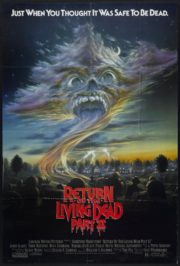An Ode to the Number One Fan
“Trust me, it’s for the best.” – A line delivered with chilling calmness by Annie Wilkes, a character who has burrowed herself into the nightmares of viewers since the release of “Misery” in 1990. Directed by Rob Reiner and based on Stephen King’s novel of the same name, “Misery” descends into the kind of taut psychological terror that feels all too real. Without the crutch of supernatural elements, the film probes the darkest corners of obsession and captivation.
Claustrophobia and Crescendos
The horror of “Misery” doesn’t come from your typical dark corridors or foreboding haunted houses. Instead, it’s the claustrophobic atmosphere of an ordinary room that becomes a prison for famed novelist Paul Sheldon (James Caan). As he awakens from a car crash, cared for by the disarmingly saccharine nurse Annie Wilkes (Kathy Bates), Sheldon’s safe haven quickly turns into a site of psychological warfare. It’s the isolation, the snowy expanse outside contrasted with the stifling interiors, that conveys the real sense of foreboding.
Director Rob Reiner is meticulous in his approach to building tension. Each new day in captivity ratchets the anxiety tighter, as kindness is slowly shed in favor of overt control and violence. There’s a pervasive dread knowing that Sheldon’s attempts to escape will inevitably face harrowing setbacks.
The Devil is in the Details
The cinematography in “Misery” is measured and deliberate. The camera often lingers on Bates’ expressions, capturing every microshift from benign to maniacal. Lighting plays a subtle yet crucial role in this transformation, moving from the bright, sterilized light of ‘care’ to the menacing shadows that accompany Wilkes’ psychotic episodes.
Unique visual touches, like the over-the-shoulder shots of Sheldon while he writes, position the audience as an accomplice to his desperate attempts to appease Wilkes. There are no flashy special effects, which underscores the realism of the horror. Instead, it is the exceptional editing that builds suspense, such as the infamous “hobbling” scene that remains etched in the collective consciousness.
Sound is equally vital, with sparingly-used but sharp sound effects that amplify the terror – the crack of bone, the thud of a body falling, or the sinister silence that stretches tautly across scenes. The soundtrack, composed by Marc Shaiman, echoes the spectrum of emotion. It is in turns melancholic, haunting, and yet, akin to Wilkes herself, superficially soothing.
Acting that Haunts
It’s difficult to overstate Kathy Bates’ transformative performance as Annie Wilkes, a role that earned her an Academy Award for Best Actress. Bates is at once horrifyingly menacing and pathetically fragile. James Caan’s portrayal of Sheldon is equally impressive. He captures a man transitioning from bewilderment, to fear, to a raging will to survive.
The characters are exceptionally well-realized and their interactions set the foundation for a character-driven descent into horror. There is no monster chasing them, no supernatural entity to blame; it’s the human psyche laid bare and erupting in violence.
An Unnerving Ballet of Horror
“Misery” leans into psychological horror, eschewing the pitfalls of other subgenres that lean heavily on gore and shock value. The fear here is not in what you see, but in what you imagine might happen next. The terror is insidious rather than explosive, gnawing at the psyche and manipulating the imagination.
Although the film has few moments of overt violence, when it arrives, it’s all the more shocking because of its rarity. But it’s the psychological torture of Sheldon — the gaslighting, the mind games — that brews the crux of the horror.
A Story Beyond Fear
Underneath its surface, “Misery” weaves themes of obsession, the burden of creation, and the sometimes toxic relationship between creators and their audience. It’s a commentary on fandom pushed to its extreme and serves as a disturbing reflection on boundaries and ownership.
Final Assessment
As a horror movie, “Misery” is predominantly a triumph – an exercise in sustained tension and unnerving character study. It’s not only frightening but also thought-provoking, showcasing the terror that arises from human nature. Horror purists, as well as those with an affinity for psychological thrillers, will find “Misery” deeply satisfying.
Comparing it to contemporaries like “Silence of the Lambs” or classics such as “Psycho,” “Misery” stands firm as a character-centric, psychological drama that requires no cheap thrills to evoke dread.
In conclusion, “Misery” is a potent blend of outstanding performances, masterful direction, and a sharp psychological edge. Dark, harrowing, yet without reliance on gratuitous violence, this film will please those looking for horror that digs into the psyche without leaving too much visible blood on the floor. Viewers should be warned, however, of intense scenes and strong themes of psychological abuse.
For those seeking a horror film rooted in character pathology and mental chess games, “Misery” is a can’t-miss classic that will leave you appreciative of your freedom, questioning the nature of fandom, and perhaps a bit wary of meeting your biggest fan.




